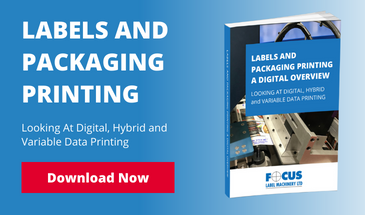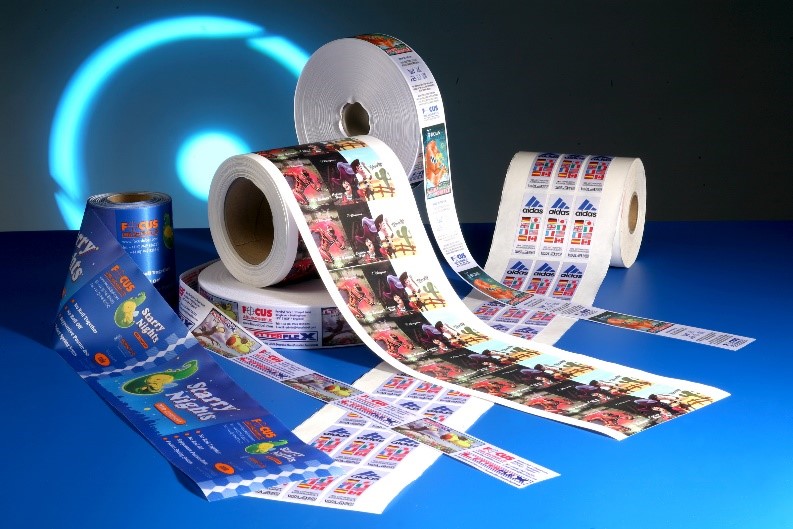
Historically there have been a number of chosen methods for production of printed garment / apparel labels / ribbons.
Silk Screen, Hot Foil Stamping & Letterpress stamping were the choices open to manufacturers 50 plus years ago. These methods competed with Woven labels at the high end but were always at odds with the high volumes of Labels required for growing global demand. Around 40 years ago developments in Rotary printing, Printing Plate, Anilox Rolls & Ink technology allowed Letterflex/Flexo systems rapid progress in becoming the technology of choice for high speed volume printed label production.
For the past 30 years Letterflex/Flexo has dominated production for garment label applications . Whilst this will continue for the forseeable future , it is always worth looking at alternatives for specialist applications. For example digital technology will offer a new opportunity for label producers to offer a viable solution to small volume incorporating variable data. The fact is no single printing system will cover all ribbon printing applications.
Hot Stamp
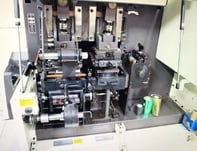 These systems use special coloured foils and metal printing blocks to stamp an image on the ribbon, fused by Pressure & heat. Production is slow , foils are expensive, colours limited and metal blocks expensive if special designs such a unique logos are required. Hot stamp machine can print on most types & qualities of ribbon, but wash resistance can be an issue.
These systems use special coloured foils and metal printing blocks to stamp an image on the ribbon, fused by Pressure & heat. Production is slow , foils are expensive, colours limited and metal blocks expensive if special designs such a unique logos are required. Hot stamp machine can print on most types & qualities of ribbon, but wash resistance can be an issue.
Letterpress
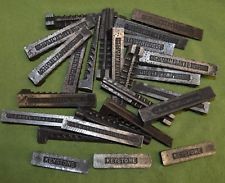 These machines are compact & similar to Hot stamp machines using wet Ink instead of foil but the same metal type blocks. They are also slow , print quality can be poor and wash resistance is an issue.
These machines are compact & similar to Hot stamp machines using wet Ink instead of foil but the same metal type blocks. They are also slow , print quality can be poor and wash resistance is an issue.
Rotary Letterflex/Flexo
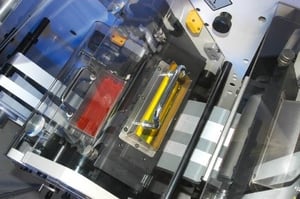 This is the dominant method of production which has remained the method of choice for over 30 Years, through its advances in Inks, printing plates, anilox rolls, ribbons & machine technology. These flexographic machines can print photo quality 4 colour process images at high speed. The equipment is compact & low cost to run.
This is the dominant method of production which has remained the method of choice for over 30 Years, through its advances in Inks, printing plates, anilox rolls, ribbons & machine technology. These flexographic machines can print photo quality 4 colour process images at high speed. The equipment is compact & low cost to run.
The latest machines have quick change facilities for colours & jobs to minimise down time & set up times. They can print several ribbons at the same time without compromising print quality and the end product is vibrant in colour & has excellent wash resistance on all fabrics. Our specialist textile label printing machinery includes the B4 and LX ranges for top level branding of apparel – the most rapid and cost effective system for printed label/ribbon/elastic production.
Silk Screen
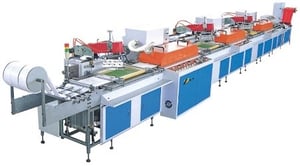 The screen-printing method uses silk screens to apply separate colour inks onto a textile surface. Each screen includes one colour and the combination of several screens onto the textile will make out the final label design. Both flat screen & rotary screen systems are available.
The screen-printing method uses silk screens to apply separate colour inks onto a textile surface. Each screen includes one colour and the combination of several screens onto the textile will make out the final label design. Both flat screen & rotary screen systems are available.
The shift in natural cotton fibre ribbons & dark colour ribbons has seen some production move back to Silk Screen printing systems. The ink laydown is much higher than Letterflex/Flexo technology so it is possible to print deep opaque colours on these difficult surface ribbons. Reasonable production speeds can be achieved by printing several ribbons at the same time. But overall silk screen machine are slow, tend to be large and have high power requirements because of the drying systems. Silk screen systems are not recommended on images needing precise registration between colours.
Thermal Printers
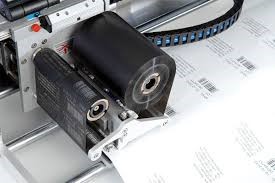 The first step in the direction of digital printing arrived through thermal transfer technology around 20 years ago. These desk top machines are computer software driven and ideal for small scale production such as in-house labelling applications. They use special Printing foils which can be expensive and are limited in colours available (Black & red), wash resistance is a limitation & they can only print onto selected white ribbons. Thermal transfer Printing is ideal for low volume production where print quality and wash resistance are not a high priority.
The first step in the direction of digital printing arrived through thermal transfer technology around 20 years ago. These desk top machines are computer software driven and ideal for small scale production such as in-house labelling applications. They use special Printing foils which can be expensive and are limited in colours available (Black & red), wash resistance is a limitation & they can only print onto selected white ribbons. Thermal transfer Printing is ideal for low volume production where print quality and wash resistance are not a high priority.
Digital Ink Jet
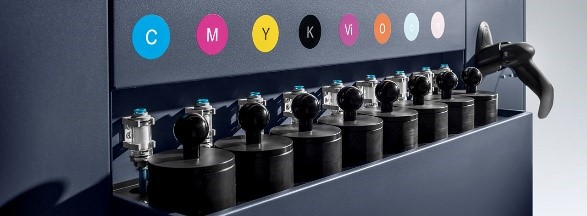
Digital Dye sublimation multi pass printing has been part of printed textiles production for the past 15 years, developing on wide multi pass printer formats they can print on polyester & some cotton based textiles but are relatively slow. They are ideal for promotional garments. signage, flags etc.
Recent developments in multi-colour Ink jet technology from Konica ,Durst and others have seen progress in high speed single pass printing onto wide web textiles, and naturally this will filter down to narrow ribbon textile printing too. Digital Ink jet systems lend themselves to smaller volumes , or high volumes with lots of variable information.
Focus Labels will also be launching its concept digital press , ‘d-Tex’ for Garment label applications at ITMA in Barcelona in June 2019. This single pass system will print on both sides of the ribbon and will present the first steps in a new era of garment labelling and hybrid printing for the Apparel trade.
Digital Ink jet printing is suitable for any number of orders and offers extreme flexibility for customised design. Price per unit is modest in digital printing but does not decrease with larger volumes, so although it can be used on high volume jobs it is usually deployed for shorter print runs.
Textile Printing Solutions From Focus
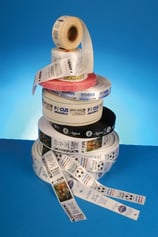 Our specialist textile label printing machinery includes the B4 and LX Rotary Letterflex ranges regarded as the best and most reliable production systems for printed apparel label production.
Our specialist textile label printing machinery includes the B4 and LX Rotary Letterflex ranges regarded as the best and most reliable production systems for printed apparel label production.
These machines incorporate the latest quick change features and rapid set ups with reduced waste. It is expected that these machines will become the base for future hybrid systems with integrated Digital Ink jet options maintaining the benefits of high volume production with printed variable information transfer a real possibility with the Focus ‘d-Tex’
Find Out More
Visit us at ITMA 2019 in Barcelona in June , or visit our web site or contact our office.





